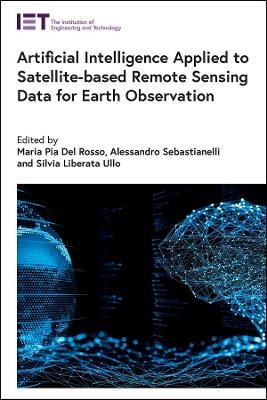
Artificial Intelligence Applied to Satellite-based Remote Sensing Data for Earth Observation
Institution of Engineering and Technology (Verlag)
978-1-83953-212-2 (ISBN)
- Titel nicht im Sortiment
- Artikel merken
Earth observation (EO) involves the collection, analysis, and presentation of data in order to monitor and assess the status and changes in natural and built environments. This technology has many applications including weather forecasting, tracking biodiversity, measuring land-use change, monitoring and responding to natural disasters, managing natural resources, monitoring emerging diseases and health risks, and predicting, adapting to and mitigating climate change.
This book shows how cutting-edge technologies such as artificial intelligence, including neural networks and deep learning, can be applied for processing satellite data for Earth observation. One of the objectives of this book is to explain how to develop a set of libraries for the implementation of artificial intelligence that could overcome some limits and encompass different aspects of research, ranging from data fusion to speckle filtering.
In the first part, the authors introduce remote sensing concepts and deep neural networks and convolutional neural networks. In the second part of the book, they present the main tools used for image processing, several simulations and the data processing of specific case studies as well as the testing of related datasets. The book ends with conclusions, open questions and future works and perspectives for artificial intelligence techniques applied to future satellite missions.
The book will be of interest to researchers focusing on using machine learning tools to process remote sensing data - particularly satellite data - for Earth observation. The book can also be used as a guide for researchers in many other fields of research who are interested in using ML techniques to process data and get reliable outcomes so they can make informed decisions for their specific objectives.
Maria Pia Del Rosso is an electronics engineer and researcher in the Engineering Department of the University of Sannio, Italy, with a particular interest in Remote Sensing and Artificial Intelligence. While a master student she worked on monitoring natural disaster through satellite data. She is a member of the IEEE Geoscience and Remote Sensing Society and the IEEE Communications Society. Alessandro Sebastianelli is an electronics engineer and researcher in the Engineering Department of the University of Sannio, Italy, with research interests in Remote Sensing and Artificial Intelligence. During his years as a master student he worked on monitoring natural disaster through satellite data. He is a member of the IEEE Communications Society and the IEEE Geoscience and Remote Sensing Society. Silvia Liberata Ullo is a professor and researcher in the Telecommunications and Remote Sensing group at the University of Sannio, Italy. Her research deals with data analysis and remote sensing techniques. She is a senior member of the IEEE and is associated with IEEE Aerospace and Electronic Systems, IEEE Geoscience and Remote Sensing, IEEE Communication, IEEE Signal Processing and IEEE Women In Engineering (WIE).
Chapter 1: The rise of Artificial Intelligence (AI) for Earth Observation (EO)
Chapter 2: Principles of satellite data analysis
Chapter 3: Artificial intelligence, machine learning and deep learning
Chapter 4: Artificial neural network
Chapter 5: Convolutional neural networks
Chapter 6: How to create a proper EO dataset
Chapter 7: How to develop your network with Python and Keras
Chapter 8: A classification problem
Chapter 9: A generation problem
Chapter 10: A filtering problem: SAR speckle filtering
Chapter 11: Future perspectives and conclusions
| Erscheinungsdatum | 03.11.2021 |
|---|---|
| Reihe/Serie | Telecommunications |
| Verlagsort | Stevenage |
| Sprache | englisch |
| Maße | 156 x 234 mm |
| Themenwelt | Informatik ► Theorie / Studium ► Künstliche Intelligenz / Robotik |
| Technik ► Nachrichtentechnik | |
| ISBN-10 | 1-83953-212-2 / 1839532122 |
| ISBN-13 | 978-1-83953-212-2 / 9781839532122 |
| Zustand | Neuware |
| Informationen gemäß Produktsicherheitsverordnung (GPSR) | |
| Haben Sie eine Frage zum Produkt? |
aus dem Bereich


